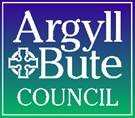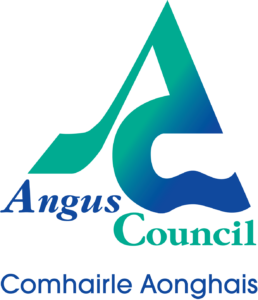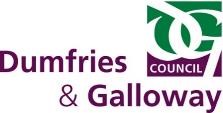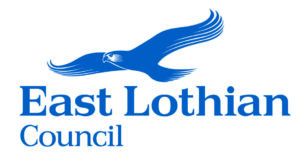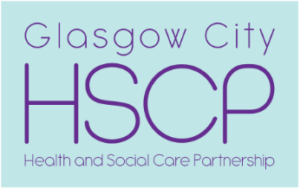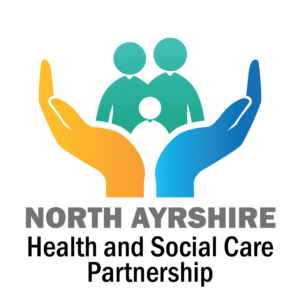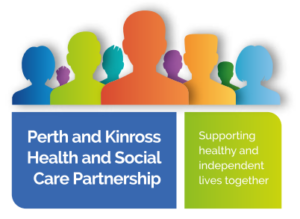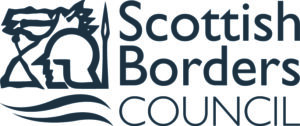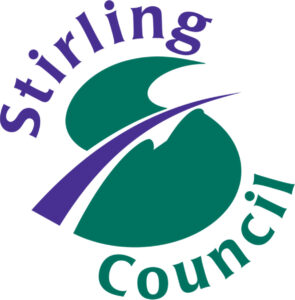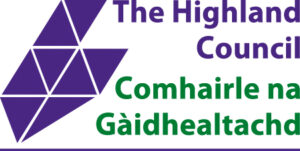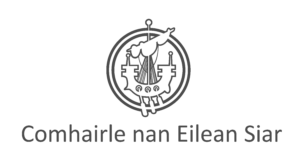Consultation on the Adult Support and Protection (Scotland) Act 2007: updated Code of Practice and Guidance for Adult Protection Committees
Submission from Social Work Scotland, to Scottish Government.
28 September 2021
Social Work Scotland is the professional body for social work leaders, working closely with our partners to shape policy and practice, and improve the quality and experience of social services. We welcome this opportunity to comment on the updated Code of Practice and Guidance for Adult Protection Committees. The reflections within this consultation response are drawn from the experience of our membership of social workers, the lead professionals taking forward duties under the Adult Support and Protection (Scotland) Act 2007 (ASP/the Act).
Social workers are uniquely placed as a profession to offer insight and contribution to this guidance and to support the effective interaction and joint working of partner professionals in the ASP process. Working within this multi-agency context social work can offer perspective to ensure the protection of adults at risk of harm remains proportionate and in line with a human-rights and person-centred approach.
It is recognised that the Scottish Government have recently consulted on an ASP Guidance for General Practitioners and primary care teams, for which Social Work Scotland has previously provided feedback and recommendations. In addition to this, the current consultation on APC Guidance is also underway. It is recommended that comments and feedback be provided in relation to the suite of supportive documents to guide practice take cognisance of amendments made across these documents to ensure continuity of content within the resources.
Social Work Scotland recommendations reflect the involvement and feedback of the Adult Support and Protection Network.
A summary of key points for consideration in the ASP Code of Practice is detailed below.
Summary of key points
- A general observation of the Code is that it can be operationally prescriptive at points, not reflective of the principles of the Act in areas, and at times offers one approach where multiple systems of operation exist, making its recommendations less applicable. The attempt to coordinate and lend consistency to practice comes across as confusing at times and does not reflect a full appreciation of operational practice, differing structures in operation, or the role, functions, and duties taken forward by a social worker across other legislative responsibilities.
- In Chapter 2, the Code is expanded to outline additional considerations that should be made when determining whether the 3 point test is met. The additions of the impact of trauma and coercive control, addictions, and homelessness, are well presented and should be helpful for practitioners. The age of transition, 16 and 17 years, is minimal and our recommendation would be to consider expanding this to ensure appropriate legislation is considered to best support the adult. Local areas may wish to enhance their ASP training to support assessment in these areas.
- When the 3 point test is not met, the Code states that local areas “would still be expected to pursue all avenues in order to protect that person from harm”. This should be further explored and expanded upon to assure partnership responsibility within this expectation, as later in the Code there is statement made that the responsibility to determine whether the 3 point test is met lies with social work. In addition, the principles of the Act could be better reflected here to acknowledge an adult’s right to self-determination, and the potential limitation in scope under legislation for social work to take forward any protective action without the adult’s consent to give fuller recognition of a human-rights based approach to intervention.
- Chapters 3 and 4 suggest how referrals, case conferences, and adult participation in ASP audits should be recorded for data reporting purposes. The recommendations made around data collection are welcome and further benefit would be gained from looking at trends emerging from ASP interventions. It would be useful to see this recommendation informing the national discussion ongoing to standardise the annual Scottish Government data return. This would support clarity, and to realise the full impact of this recommendation, it would need to be linked to the national return.
- The Information Sharing and effective protection of adults at risk of harm section in Chapter 3 would benefit from acknowledging the principles of the Act, guidance around proportionality, and consideration of an adult’s right to privacy and confidentiality, whilst recognising the legislative basis to share. There are statements made that confidentiality is not an “absolute right” for people, which could be expressed more sympathetically to support information sharing in line with human rights. Expanding this section to acknowledge this, as well as the consideration of information sharing at the age of transition (16 and 17 years), would bring a fuller depth to the detail provided.
- In Chapter 5, Inquiries, the Code addresses referrals into social work. It states that all referrals coming into social work on an ASP form should be considered under ASP and that referrals incoming noted as Welfare Concerns (from Police Scotland and SFRS) should be screened for ASP and progressed to ASP where required. It would be useful to highlight that social workers undertake screening activity for all work incoming as part of section 12 Social Work (Scotland) Act 1968 duties. We believe there is a risk that this expectation in the Code functions more as a procedural approach to referrals, rather than one reflective of an understanding of social work duty and function. The Code, as written, could limit the scope of consideration from a wide range of legislative options toward a single focus on the ASP Act. Consideration and acknowledgement of the principles of least restrictive and proportionality could be highlighted here to enforce the importance of giving these effects. Additionally, Police Scotland have a section 5 duty to report harm under the Act. To ensure this is done effectively and to identify any learning needs for officers, the Police have a dedicated Police Hub in place to support quality assurance in referrals. It would perhaps be more appropriate to highlight that social worker may require to upscale harm from any referral if it has not been identified by the referrer.
- In Chapter 5, Specific to Welfare Concerns received into social work, the Code raises the expectation that social work should contact the referrer of a welfare concern upon conclusion of social work intervention to advise them of the outcome. This expectation would potentially have implications on capacity within teams and is questionable when considering an adult’s right to confidentiality. In our view, this area would benefit from further consideration: can this recommendation (or should it) be made in an ASP Code of Practice, where actions taken forward would fall under the Social Work (Scotland) Act 1968.
- Chapter 6. The Adult Support and Protection (Scotland) Act 2007 places emphasis on the support element of the Act. While a minor linguistic point, we would like the guidance to reflect the support element when moving through the ASP process. For example, in this Chapter, the guidance title, Adult Protection Investigations and visits, could be reworded to include Adult Support and Protection Investigations, which would emphasise this important feature of the Act.
- In Chapter 8, the Code is operationally prescriptive in how information learned through Inquiry and Investigation should be considered. The Code states that in all cases a risk assessment of information learned through Inquiry and Investigation should be taken forward through a Case Conference, with the expectation that a case conference would be the model to achieve a multi-agency assessment of risk. The risk in this scenario is that there could be a loss of consideration for the least restrictive and providing most benefit principles. Where proportionality and person-centred approach should guide, these could become lost in a process-driven approach. It would be better for the Code to guide on the importance of multi-agency risk analysis and how that should be evidenced and recorded, rather than to insist upon a process that may not be required, or appropriate, in every case.
- In Chapter 8, the Code introduces guidance on LSIs with actions proposed to support a unified approach to harm in regulated services. It is acknowledged that LSI is not an identified stage in the ASP process or legislation however the intention to support the process would no doubt be welcome to practitioners. There is some confusion in the way in which the detail is provided with that would merit further exploration, as the Code tends to veer toward being operationally prescriptive, which may make it less applicable across the varying structures nationally. The Code suggests that two strands of meetings are held, one for oversight, with Head of Service or above chairing, and another for individual ASP actions and protection plan monitoring. In our view, this approach may have implications on capacity in services to deliver such a model and could be seen as duplicating efforts for similar intentions.
- The Code also introduces the expectation that Adult Protection Committees are kept regularly appraised of LSI activities (also in Chapter 8). Social Work Scotland suggests reconsideration of this action for a few reasons:
The scope of the APC duties within the Act applies to public bodies and their officers, of which many care homes and care agencies (where the majority of LSI activity occurs) are not. The Act does, however, place a duty on APCs to support cooperation and communication. Whether an approach as recommended would support cooperation and collaboration with a private business would be questionable. APCs may not include the agency being discussed through LSI as members, potentially putting cooperation at risk.
LSI improvements are contingent upon supportive and trusting relationships with agencies feeling able to contribute and be supported to make improvements and future referrals under ASP. The APC’s ability to enforce or insist upon any improvements with private businesses would be limited as this recommendation falls out with the scope of their statutory functions.
A potential solution to support APC involvement in this area could be to recommend that social work services and the Care Inspectorate present themes and trends around harm in regulated settings to APCs to allow any development of public campaigns and offers of multi-agency trainings to be extended to those partners not named within the Act.
- Chapter 11, The Protection Orders section has been rearranged in the new Code and is more streamlined and well laid out, this is a useful amendment to the previous Code.
Code of Practice – Questions
1a. Chapter 2 seeks to clarify understanding of the previous distinction between people who are unwilling, and those who are unable to protect themselves. How well do you think these objectives are fulfilled?
Somewhat.
The Code has been expanded to include areas that will support in the assessment of the individual’s ability to safeguard, and what influences should be considered when determining “unable versus unwilling”. We would suggest a few additions, as detailed below, that this section could incorporate to better support the practitioner in making these determinations.
The Code refers to the principles of the Act at the start of Chapter 2, and these are clearly stated in the text which will be easily accessible for practitioners. Weaving the principles throughout the Code from this point is not always successfully done. For example, in determining whether someone is “unable or unwilling” the Code details the importance of consideration of past trauma, but does not refer back to the requirement in the Act that the principles are considered and it would be helpful to add this here.
In outlining the general principles of the Act, where age is referenced, it would be helpful to reference that other protective processes and legislation may apply in relation to the transition ages of 16 and 17 years.
Particular Circumstances
Trauma, Addictions, Homelessness, Hoarding
Social Work Scotland welcomes the addition that practitioners should be trauma-informed and the inclusion of a link to a trauma website is helpful. Including the principles of the Act into this section to encourage the consideration of these alongside the impact of trauma would be recommended to support a full understanding of the responsibilities of the practitioner when making determinations of whether an individual can safeguard. The workforce in local areas may need to be provided targeted training in this area to support a human-rights based approach to assessment.
The expansion of the addictions, homelessness and hoarding section from the previous Code shows, in a concise way, where the intersection of these elements with mental disorder and infirmity, would mean the ASP Act applies. With the addition of the principles of the Act, this will be useful to practitioners.
Financial Harm
This section introduces the element of coercive control into the factors a practitioner should consider when determining “unable or unwilling” and whether the 3 point test is met. This is welcome and practitioners will likely recognise coercive control within this context. Feedback from practitioners to Social Work Scotland has suggested that local areas may wish to enhance their training in relation to undue pressure and coercive control to support learning around this area as it relates to all types of harm.
Young People
The transition age of 16 and 17 years reflects additional considerations that social workers should make to ensure appropriate engagement and use of legislation. We believe the section under young people could be enhanced with reference to National Child Protection Guidance, and links to the United Nations Convention on the Rights of the Child (UNCRC) added to support consideration in this area for practitioners.
While the ASP Act may apply from the age of 16, it would be recommended to reference in this section that there are young people for whom child protection processes may be more appropriate, where they have experienced or been at risk of significant harm. This would need to be thoughtfully considered in addition to when a social worker was determining whether someone was “unable or unwilling” to safeguard. An example of this would be for young adults under 18 years of age, where trafficking, sexual exploitation, forced marriage, or FGM is a concern. In these instances, referrals should be made under child protection processes and in general terms, child protection processes should be considered for under 18’s who have experienced or may be at risk of abuse. Taking this approach would ensure the protection of rights and considerations by core child protection agencies are integrated into discussions. This approach supports dialogue amongst professionals of the most appropriate process to follow to protect an individual from harm and to protect other children or adults who may be at similar risk in the same environment, or from the same person(s), given the presenting concerns.
To effectively engage all relevant and appropriate practitioners and agencies in these considerations, an Inter-agency referral discussion would be appropriate and this recommendation aligns with the National Guidance for Child Protection in Scotland recently published.
1b. Secondly it seeks to provide greater clarity around issues of consent and capacity. How well do you think its objective is fulfilled?
A little.
In our view, the reference to the 3 point test and the consideration of capacity should be considered for rewording. The Code suggests that “Capacity is not, and never should be, a consideration in the three-point test”. While it is true that someone who has capacity may nevertheless be unable to protect themselves from harm; it is also true that someone who lacks the capacity to make or act on key decisions relating to their welfare or finance will be unable to safeguard themselves in the same key aspects. In taking this into account, denying the relevance of an assessment of capacity to considerations of the first of the 3 points in the three-point test is not helpful. We suggest the alternative wording that, “whilst someone who lacks capacity may be unable to safeguard their own property, rights and other interests, it should never be assumed that an adult who has capacity is able to do so, nor should any decision made regarding whether an adult is an adult at risk ever be delayed for an assessment of capacity to be undertaken”. This supports concerns that retaining capacity excludes someone from meeting the 3 point test in a clearer way while recognising the fact that those who lack capacity would potentially not meet the first point.
The Chapter helpfully outlines each of the 3 points in the test to provide further insight into considerations that should be made when assessing against them:
Unable to Safeguard
The Code introduces the impact of trauma and coercive control on an adult’s ability to make decisions around safeguarding. This section would be enhanced by the addition of the principles of the Act, with a reminder of the responsibility to consider these throughout the ASP process. We welcome this addition to the Code and it reflects the complexity of assessment in this area, with an equally welcome addition that the practitioner should consider the whole of the adult’s circumstances before determining whether they have the ability to safeguard. The addition of these areas of consideration into the Code may require additional learning and skills development for practitioners to support how such decisions are made in line with human rights based context.
Risk of Harm
This section includes an update on legislation since the last review of the Code in 2014, with the Health (Tobacco, Nicotine, etc. and Care) (Scotland) Act 2016 and the Counter-Terrorism and Security Act 2015. These are useful to include.
Being More Vulnerable to Harm
The section teases out what is meant by “infirm” in the Act, separating it from a medical diagnosis of disorder or disability. To illustrate the point, the definition of infirmity is provided which should support the consideration of infirmity in its own right, and could be viewed as useful, “‘weakness (or want of strength), inability or lack of power to do something. Infirmity does not therefore necessarily rely upon a medical diagnosis in the way that disorder or illness do.”
Use of the 3 point test
In this section, there is an acknowledgement that the whole of an individual’s circumstances and abilities should be considered and can change, with specific reference made that capacity is not part of the 3 point test, but should be considered at other points of the ASP process, in particular with regard to consenting to a medical examination. Comments referenced above with regard to capacity and safeguarding and to the responsibility to consider the principles of the Act would be helpful to reference here.
Where an adult is at risk of harm but does not meet all 3 points of the test, there is an addition of a statement that partnerships, “would still be expected to pursue all avenues in order to protect that person from harm”. . We suggest there is an added clarification within this paragraph that the expectation applies to all members of the partnership. This clarity may be required as the preceding paragraph places recognition on the social worker’s responsibility to consider intervention under other relevant legislation and without clarification here, there may be an assumption that social workers hold responsibility for onward actions.
In addition to this, it would be necessary to include the principles of the Act in this section to support decision making that remains in line with the adult’s right and responsibility to engage in their own risk enablement. This would also support an understanding of an adult’s right to self-determine or to choose not to have involvement of services in their life, which is essential in a human-rights based approach. The Code could be enhanced with the acknowledgement that to truly take forward a human-rights based approach, where an adult does not wish to engage, there may be limited scope under legislation for social work to take protective action.
2a. Chapter 3 seeks to strengthen the guidance around the duty to refer and the duty to cooperate. How well do you think these objectives are fulfilled?
Chapter 3
Somewhat.
All duties placed upon Councils by the Act are listed as in the previous Code, as well as actions that can be taken by councils. The definition of a Council Officer and the powers placed upon them by the Act are explained and in general, the section is clear and should be easy to follow by practitioners. There is an addition at section 9 of the Public Bodies (Joint Working) Scotland Act 2014 which supports updated operational arrangements and this is welcomed.
The duty to refer and cooperate section clearly outlines the duty to report harm and encourages that when in doubt a referral should be made. It is recommended that the Code expand the section to clearly lay out the duties and responsibilities on public bodies with the suggestion that some services are identified who hold such a duty, for example, opticians, dentists and other NHS employees.
The Code suggests that all referrals coming into social work identified as ASP should be counted as ASP referrals for data returns. For this recommendation to have a useful impact and to allow a national picture to develop there should be a connection to the national Scottish Government data return for ASP. The ability to identify learning for partner agencies regarding the referrals they make into social work could be achieved through this recommendation, however it would be more effective to coordinate such a recommendation through the national data return rather than from the Code of Practice to ensure its consistent application across Scotland.
There is an acknowledgement of the expectation of services not listed in the Act to cooperate with ASP processes, including referrals and engagement with Section 4 duties. This is welcome and should be clearly linked to the effective protection of adults when all partners engage in the public protection process.
General Practitioner
A reference that “it is ultimately the responsibility of the council or delegated agency to decide whether an adult meets the definition of an adult at risk of harm” from the ASP GP Guidance may be seen as contradictory to the multi-agency approach the Code has set out to achieve. In many local authority areas, GPs and all referrers play an active role in determining whether the 3 point test is met and this should continue to be encouraged and expected. There would also be opportunity to identify in this section that some GPs are NHS employees, and therefore would hold the same duties as other public body workers. This has been fed back to the Scottish Government in the consultation response Social Work Scotland provided for the ASP GP Guidance, and would be recommended here as well.
Scottish Fire and Rescue, Scottish Ambulance, and Scottish Prison Services
A good reference is made to the important contributions of SFRS, SAS, and SPS and the key role they play in supporting adults at risk of harm. This section refers to independent and private institutions such as banks and building societies with regard to the key role they can play in identifying an adult at risk of harm and this acknowledgement is welcome. Specific reference made to Social Work Scotland’s Protocol for Requesting Information under Section 10 of the Act, for use by local partnerships, as a template for their own procedures is welcome.
2b. Secondly, Chapter 3 seeks to significantly strengthen the guidance in relation to expectations regarding information sharing. How well do you think this objective is fulfilled?
A little.
Information Sharing
The section on Information Sharing could benefit from clarification. The first 3 paragraphs (31, 32, 33) on information sharing vacillate between ‘you must share regardless of consent’, to ‘reflection on the principles of proportionality and necessity. We would suggest that there would be a benefit of starting the section with the principles of the Act, encouraging the benefit of sharing proportionate information to support an adult at risk, and an acknowledgement of the legislative basis from which to share. This position is clearer as the section progresses, but the initial few areas could be clarified to support that message in the Code.
In paragraph 31, the statement “The protection of adults at risk of harm is everyone’s responsibility and everyone’s job”, is not legislatively correct given the previous section which outlines the duties placed upon named bodies are for those included in the Act. Stating that, “We all have a responsibility duty, individually and collectively, to protect vulnerable people in our communities” could be better presented. While the sentiment expressed appeals to a sense of moral justification, there should be a qualifier within the statement to indicate that adult protection is important and supporting individuals at risk of harm is best done through collaboration and with a sense of community responsibility.
Equally, paragraph 32 states that “Whilst confidentiality is important, it is not an absolute right.” Can confuse the legal basis under which information is shared. There are criteria for information sharing that would be beneficial to add to this section to support the practitioner around whether and what to share, how and with whom. Relevance and proportionality of information shared should be highlighted here as considerations. The section mentions necessity and lawful basis later in the next paragraph and in paragraph 34, and the Code would benefit from joining these two to have a considered approach to information sharing that sits comfortably between supporting an adult at risk and respecting their right to privacy and confidentiality. We would therefore recommend that appropriate legislative links are embedded into this section to encourage this cross-referencing for practitioners.
The addition of how information is shared at the transition age of 16 and 17 years, with reference to the National Guidance for Child Protection would give wider thought to all of the legislation available when determining appropriate pathways for this age group.
3a. Chapter 5 seeks to give more detail in relation to the nature of referrals. How well do you think these objectives are fulfilled?
A little.
The Code would benefit from the acknowledgement of the section 12 duty under the Social Work (Scotland) Act 1968, upon which referrals are considered for progression. This would mitigate any risk that all referrals incoming to social work should be viewed under the Adult Support and Protection Act. The inclusion of the principles of the Act into this section would also be helpful.
Referrals
Paragraph 5 outlines the two types of referrals a social work service may receive, those under ASP and those determined welfare concerns. Paragraph 7 suggests that both referrals should be considered for ASP, with welfare concerns being upgraded to ASP if required. We would agree that where harm is identified in a referral, the referral should be considered under the Act. However, the Code does not reference the section 12 duty under the Social Work (Scotland) Act 1968 that applies to the general function of social work and which we believe would clarify the section. There is a risk in the expectation that work could become tracked toward ASP legislation and that the nuance of the social work assessment, made by professional and skilled workers, would be limited by the prescriptive nature of the Code that appears to be driven by the procedures in partner organisations around referrals into social work under Welfare Concerns. We recommend that both the principles of the Act and the duty under the 1968 Act are interwoven into this section in recognition that social work function is guided by both.
Inquiries
The Code, in paragraph 14, indicates that any referral made under ASP or on ASP paperwork must be taken through the Inquiry process under ASP. There is a risk to implementing this approach as it does not acknowledge the responsibility to consider the principles of the Act or recognise the consideration of other appropriate legislation at the point of referral into social work. While an encouragement of referrals into social work where concern for an adult is a positive and supportive aspect of the Code, the direction of professional social workers toward the use of one legislation over another would pose a risk that referrals are tracked. This has the potential to direct responses away from a more appropriate intervention, for example, in the 16 and 17-year-old age range, where Child Protection legislation may be more appropriate, or from Mental Health Act where the duty to inquire function exists as well.
The Code promotes collaboration with partners at the Inquiry stage which is welcome, however, this would have been an opportunity to specify and expand upon the importance that GPs play in the Inquiry process which could perhaps be revisited. The section also states that this stage of the ASP process can be taken forward by those who are not council officers which promotes the wider reach of ability to ensure harm is accurately identified and taken forward.
The Code is clear in identifying that once there is a requirement to visit the adult, either at the point where the 3 point test has been established or where there is a requirement to visit the adult to establish if the 3 point test is met, that actions should be taken forward by a council officer. This clarity will be helpful for services taking forward these duties.
The Code recognises the interplay of the needs of the carer or proxy in the ASP inquiry stage with the suggestion that their needs be considered as part of the overall assessment of support that may be required which is helpful.
A clear outline and reminder of the principles of the Act in considerations of intervention after the Inquiry stage would be merited here as they are later referenced in the Investigation section.
Interagency Referral Discussion
This section acknowledges that some areas use IRDs to share information and it makes specific reference that IRDs should be carried out when there are child protection considerations. Feedback from members has suggested that the section would be enhanced with recommendations of when an IRD should be undertaken, given the differing practices across Scotland. A link is provided in the Code to the AP Committee guidance that does not seem to clarify this point further.
In addition to providing more clarity on when an IRD should be held, the section would benefit from an acknowledgement of the impact holding IRDs can have on the ability to complete timely ASP inquiries. The gathering of detail from professionals to achieve multi-agency collaboration has been consistently raised by operational teams as a contributing factor for delays in completing a timely Inquiry. An acknowledgement that getting practice right in this way means taking an approach that can be timely, would support a wider understanding of the impact of the actions taken forward under ASP.
Where an Adult at risk declines to participate
The section clarifies that while all effort should be made to include the adult, the ASP inquiry process should be progressed even where the adult refuses to participate to ensure that appropriate advice support and guidance can be provided to the adult. There is recognition that assessment of capacity and undue pressure should be considered at this stage and it would be recommended that the principles of the Act are referenced here to support decision making in such instances.
3b. Chapter 5 also seeks to reflect the introduction of welfare concern referrals and IRD processes in some areas of Scotland. How well do you think this objective is fulfilled?
A little.
Welfare Concerns
The Code states that “all welfare concern referrals should be screened” for potential ASP concerns. As noted above, the addition of the appropriate legislation under which social work carry out duties, the Social Work (Scotland) Act 1968, section 12, would clarify the basis from which social workers operate upon receiving referrals into social work. This would avoid the potential risk that all work coming into social work would be tracked toward ASP legislation. It would perhaps also be worth adding further detail around the Police section 5 duty under the Act, and the purpose and role that the Police HUB plays in quality assurance of referrals to capture the importance of all key partners making informed referrals.
The Code could perhaps adopt the following statement; “When a social worker is taking forward duties under section 12 of the 1968 Act, and there is an indication that an adult may be at risk of harm, then appropriate actions should be taken under ASP or other relevant protective legislation, such as Child Protection, in cases where an adult is at transition age (16 and 17 years)”.
Another helpful addition would be to clarify that where an inquiry is made under ASP then contact should be made with the referrer. This would avoid confusion in the expectation that referrers are contacted around actions taken forward under section 12 duties from the Social Work (Scotland) Act 1968. There is no obligation under the 1968 Act that all referrals received into social work should have reciprocal contact to the referrer upon completion. Confidentiality of the individual referred into social work would need to be maintained to support ongoing work with and on behalf of the individual that could be compromised by the expectation that all referrers are provided feedback on the interventions and inquiries made by social work.
4. Chapter 6 seeks to clarify the relationship between an inquiry and an investigation. How well do you think these objectives are fulfilled?
Somewhat.
To maintain the spirit of the legislation it would be recommended that the language of this Chapter reflect the full title of the Act, Adult Support and Protection Investigations, rather than Adult Protection Investigations.
The statement that “an Investigation is, therefore, part of and not subsequent to, a section 4 Inquiry,” has been raised by members as confusing. Members have reported that they would find it helpful to have a clear delineation between Inquiry and Investigation within the Code. Earlier in the Code (paragraph 20 under Inquiries) clarification is made that when the 3 point test cannot be concluded and it is determined that a visit is required to establish if an adult is at risk, this would initiate the start of an investigation under section 7. Holding that as a distinct point when the ASP process moves from Inquiry to Investigation is helpful. Stating that Investigation is a continuation of Section 4 could cause confusion as to which part of the process the practitioner is working under and therefore impact on whether they are carrying out the duties required under Investigation. It would be recommended that this is reworded to allow a definitive line on the matter to be drawn to guide practitioners. Removal of this sentence, “An investigation is, therefore, part of, and not subsequent to, a Section 4 inquiry” and replaced with something suggesting that if you are visiting an adult under ASP you should consider and enact duties under Investigation, would support that.
What is the purpose of the Visit?
The section outlines the power under section 7 of the Act to allow a council officer to enter any place to make inquiries. The detail is helpful and the expansion to acknowledge that other formats to conduct an interview, via technology, would be an acceptable means to take forward this power will also be useful to practitioners.
What you should consider prior to the visit?
Consideration of the principles of the Act prior to intervening under the Act is welcomed and we think this will support a proportionate and considered approach to actions taken. Additionally, consideration of the principles of the Act- at the end of the inquiry stage – should also be added, to ensure that intervention in an adult’s life is guided by considerations underpinned by these principles. This section is well laid out and should be easy to follow by practitioners.
What evidence must a council officer produce?
This section provides clear and concise detail of what evidence the council officer should provide to the adult when taking forward their duties under the Act. This version of the Code removes the requirement for the second officer to provide evidence of their identity and it would be recommended that this be considered for reinstatement for the benefit of the adult to ensure they are fully aware of the identity of each individual attending under ASP.
5. Chapter 8 is a new chapter, providing specific guidance in relation to risk assessment, case conferences, protection plans and managing risk. It seeks to offer greater clarity and explanation around these issues. How well do you think these objectives are fulfilled?
Somewhat.
This section of the Code is new and supports a multi-agency collaboration and approach to managing risk which was welcomed by our members. The section outlines areas that should be covered within local procedures and the list reflects a competent and full consideration of the intersection of areas relevant to managing risk. The approach to analysing risk veered toward an operational approach around case conferences however and an additional reminder that the principles of the Act should underpin any intervention considered at this stage would be helpful as recommendations made later in the Chapter do not appear to take these into consideration. The detail provided around Large Scale Investigation (LSI) would benefit from further consideration, as efforts to provide guidance on practice move toward the procedural which may not be applicable in the different structures in place nationally.
Case Conferences
The Code states that in all cases the assessment of information obtained through Inquiry and Investigation should be analysed through interagency case conference. This approach does not support considerations in line with the principles of the Act, that interventions under the Act are proportionate, least restrictive, and will achieve the most benefit for the adult where other less intrusive actions cannot be achieved. Case conferences are a competent way to address complex risk and manage protection plans, but they should not be a blanket approach to analysing information received through the Inquiry and Investigation stages of ASP where it has been determined that a less intrusive action can be taken.
Where case conferences are taken forward it is agreed that it is helpful that the Code highlights training requirements and engagement of appropriate partners and the adult in the process. This detail is clear and would be easy to follow.
Large Scale Investigation
This section of the Code is new and introduces a process by which harm, occurring in a regulated service or by a regulated service provider, can be considered. While it is agreed that the Code should offer guidance on approaching institutional or structural harm, the approach taken to address this in the revised Code should be reconsidered. The detail within the LSI section is prescriptive and does not take into account the various structures under which local authorities operate and therefore may be limited in its application.
Where the guidance is intended to be broad, it becomes specific, for example on page 53 paragraph 16 indicates that decisions should be made to progress with an LSI at a multi-agency meeting chaired by a Head of Service or above. In some partnership areas, the position above Head of Service is the Chief Officer of HSC. It would perhaps be better to reflect that the chair of such a meeting should be of sufficient seniority to affect strategic and operational changes which would allow more latitude across current structures to take forward this expectation.
References made in paragraphs 18 and 19 indicate that an oversight group should be arranged to address the harm identified in the home or regulated service and that in addition to this, individual meetings should be arranged to consider the service users of the regulated service who should all have inquiries and associated protection plans. The impact of this two-tier meeting structure and the expectations placed on social work to operate in this way warrant further exploration. Harm identified in care homes or within care at home involves numerous service users and the approach suggested of individual inquiries would likely cause additional workload for teams which may not be required to achieve positive outcomes and reduce harm.
The intention of an LSI is to address structures and systems that lead to harm for all adults under those structures. It would not be proportionate or productive to support structural and systemic improvement in an LSI by taking forward individual Inquiries and protection plans for every adult. The most appropriate course of action to address structural and system harm is to address that with the care provider and regulatory partners, such as the Care Inspectorate, to ensure the sustainability of the service in the local area and improve outcomes for residents and service users through a proportionate response.
An addition to the Code from the previous version is the expectations that Adult Protection Committees will be kept regularly updated on LSI activity. It would be useful to consider the impact of this expectation on engagement with care home and care at home services. Structural and systemic harm requires a truly collaborative effort amongst professionals to support the reduction of harm and improve outcomes. There should be a reflection on the value of discussing LSIs at an APC where the private care provider is likely not to be anonymised or in attendance. Consideration should be given to whether effective collaborative work could be achieved through such a process, the benefit of extending the scope and reach of the APC where they do not hold powers to enforce change, and the potential confusion and blurring of lines between regulatory agencies and the APC in supporting improvements.
Provision of themes of harm and reassurance that partners are addressing these issues operationally and in collaboration with providers and the Care Inspectorate should be enough detail for the APC to carry forward planning in relation to promoting training, advice, and guidance to those public bodies and officeholders in its scope of statutory influence.
Initial and Significant Case Reviews
This section references the Scottish Government Interim Framework for ICR/SCR which is competent and detailed with reflection on the role of the Care Inspectorate and the processes that have been developed to centralise information and themes found as a result of reviews of significant events. The reference to this in the section will be of help to APCs and practitioners.
6. The chapters on protection orders have been rationalised. Chapter 11 now covers the common elements of protection orders, and the subsequent chapters (12-14) focus on each type of order separately. The intention is to make this section more user-friendly but still provide sufficient guidance and clarity. How well do you think these objectives are fulfilled?
Mostly.
This section outlines the considerations that must be given when determining whether to progress for a protection order. The section is complete and full and would provide a comprehensive reference to consult for a practitioner. The redesign of the revised Code and the layout of the Protective Orders section makes more sense and is more streamlined.
Chapter 12, 13, 14, and 15: Assessment, Removal, Banning and Temporary Banning Orders, and Offences
Full and complete detail of processes taken through the use of Orders. In the section on Offences, the offence of obstruction, section 49, in the Act is outlined detail provided on the implications of this.
7. If you would like to provide any comments or suggestions about the changes please do so here:
Preface
The intention of the guidance is well laid out and promotes inter-agency cooperation, which practitioners will welcome. However, in attempting to address the issue of “regrading” ASP referrals, either upgrading a welfare concern to ASP or downgrading an ASP referral to a welfare concern, the guidance becomes prescriptive, which is not helpful. Social workers hold duties under several pieces of legislation and use professional skill and judgement in determining the appropriate use of these for each referral. These judgements are made on balance with a human-rights based approach and in line with principles of proportionality, least restrictive, and to achieve the most benefit for an individual in their own unique circumstances. The guidance as written could limit a worker’s considerations on exercising this ability by prescribing approaches to all referrals through an ASP lens.
Chapter 1
This Chapter includes welcome reference to several key activities and updates ongoing. The Scottish Mental Health Law Review, with recognition of a person-centred, rights-based, approach in line with the European Convention on Human Rights (ECHR), is included. There is also an acknowledgement of the Scottish Governments intention to uphold the principles of the United Nations Convention on the Rights of Persons with Disability (UNCRPD), which advocates for the move from substitute to supported decision making.
We would like to highlight and recommend the addition of the United Nations Convention on the Rights of Children (UNCRC) to the chapter. This would be a useful reference for practitioners as they consider the appropriate use of protective legislation for young adults at transition, within the age range of 16 to 17 years. This would be consistent with the reference made to the UNCRC later in the Code.
The Chapter highlights that the purpose of the Code will be to provide “guidance about the performance of functions by councils, their officers, and other professionals under the Act. It provides information and guidance on the principles of the Act, and about the measures contained within the Act including when and where it would be appropriate to use such powers”
The intention of the Code is clear in the above statement, with the Code viewed as a guidance tool reflecting the principles of the Act. This is welcome, however, it is noted that at points the attempts to offer guidance become operationally prescriptive, which can then pose a challenge for application across different locality structures. The prescriptive nature of some processes can also come into conflict with the principles of the Act. An example of these would be with regard to Large Scale Investigations, where the Code suggests that the Head of Service or above should chair all oversight meetings, which is operationally prescriptive and may not be appropriate in all existing structures. Another example would be the statement that risk analysis of detail learned through inquiry and investigation must take place at a case conference which is operationally prescriptive and limits the ability to apply the principles of the Act where it may not be of benefit for an adult, who should be in attendance at any meeting held about them. A caveat added to that section to remind practitioners to be mindful of the principles of the Act when determining the next steps would be useful.
Chapter 4 Adult Participation
The section encourages the inclusion of the adult in the ASP process on the basis of the principles of the Act, highlighting the need to keep the adult informed through the use of accessible formats and advocacy. This section will encourage a practitioner to be mindful of the engagement of the adult in the ASP process which is helpful. Accessible communication, including making provisions in BSL, is welcome.
The section on Advocacy outlines the importance of offering advocacy after the Inquiry stage to support an adult in the ASP process and this is welcome and will assist practitioners. The recognition that the duty to provide advocacy where an adult has a mental disorder is acknowledged, with a reference to the principles of the Act, that intervention should be of the most benefit to the adult and to ensure this is achieved, advocacy should be considered for involvement.
The role of the Appropriate Adult is detailed within the Code. The Code would be enhanced here with a statement that where an Appropriate Adult has concerned an adult is at risk of harm, they should make a report of harm to social work. Appropriate Adult legislation places responsibility for delivering Appropriate Adult services on the local authority, and as such a section 5 duty would apply. In this instance, reference in the Code to the duty to report harm and cooperate with an Inquiry and Investigation would be helpful.
Meetings of agencies with the adult at risk
This section highlights the importance and right of the adult to attend any meetings held about them and the detail provided should support the engagement of an adult in their case conference or any other meeting held about them. The potential impact on the adult, and carers, of the ASP process, is reflected, and it is recommended that this be acknowledged as part of considerations made regarding the application of the principles of the Act. The detail provided around Self-Directed Support is helpful to include in the Code to enable its consideration as to how to best support an adult at risk of harm. The associated links to legislation are useful and should support cross-referencing to important legislation and guidance.
Audit of Adult Participation
This section lays out expectations that any audit of ASP needs to ensure there is a contribution from adults and feedback in their own words. This is a welcome expectation and one which would benefit from being made within the APC Guidance currently out for consultation. The additional expectation that APCs should be tracking the number of meetings held and the number of these meetings where the adult attends would be an area to expand upon in the national ASP data collection. This recommendation would be additional data collection activity at the national level that should be considered as part of the Scottish Government return if it is to be fully realised from this recommendation in the Code.
Chapter 7: Interviews conducted as part of an adult protection investigation
The recommendation in this section is around the consideration of wording and the use of language in the title. The language used in the title of this Chapter should be reconsidered to follow the Act, therefore, “Interviews conducted as part of an adult support and protection investigation”, would be proposed.
This section outlines the components of the Section 8 power under the Act which allows the council officer to conduct an interview. It clearly describes what an interview is, where an interview can take place, and the right of an adult to not answer questions within the interview. It is well laid out and would be easy to follow for the practitioner. Reference to support and advocacy is made and would be helpful as a reminder for the worker taking forward this power. Reference to Section 35(6) of the Act indicating that a council officer or a medical practitioner cannot override the adult’s wish not to participate is useful and highlights the human rights approach and considerations that should be made when supporting an adult at risk.
Capacity
The importance of obtaining consent during the interview process and assessing the adult’s ability to understand the process and contribute to it is detailed within this section. The detail around capacity and the ways in which it can vary across areas is important and will be of value to practitioners. Further detail has been provided on consideration of capacity in relation to the ability to safeguard under the section Use of the 3 point test.
Participation
Consideration of supporting an adult to contribute as fully as possible to the ASP process is detailed in this section, with reference to consideration being given to undue pressure. Facilitating interaction through appropriate communication aids and interpreters is detailed and will be helpful to the practitioner. The consideration of the requirement for an Assessment order is introduced.
The section considers communication support requirements, such as sensory impairment and those who do not use English as a first language. It later provides the recommendation that a sign language interpreter is utilised to support non-verbal communication and with regard to the BSL Act recognising BSL as a language. It would be recommended that the use of a sign language interpreter be moved from the sentence around non-verbal communication and Makaton, to the following bullet point where an interpreter is recommended for other languages. This would be in line with the recognition of BSL as a language rather than a communication difficulty.
Chapter 9 Medical Examinations
This section is complete and easy to understand and it refers to the Sexual Assault Referral Centres, which is a welcome addition. It would be recommended that links to relevant legislation are included here for completeness. The Forensic Medical Services (Victims of Sexual Offences) Scotland Bill, the Clinical Pathway Guidance for both Adults and Children who disclose sexual assault, and in addition, reference to the National Child Protection Guidance with its reference to medical examinations for young people in transition age of 16 and 17 years.
Chapter 10: Examination of Records
This section outlines the duties under Section 10 of the Act and outlines these in a clear and competent manner. The reference to the Protocol for Accessing Records circulated by SWS is a welcome reference. There is good proportionality of information sharing and access to records within this section with a clear reflection of the rights of the adult and obtaining consent where possible.
Legislation Links
A list of legislation is included in the Code and it would be recommended that there is the inclusion of the recently published National Child Protection Guidance, and the Domestic Abuse (Scotland) Act, for completeness.
For further information, please do not hesitate to contact:
Jennifer Rezendes
Head of Policy and Workforce, Social Work Scotland
Jennifer.Rezendes@socialworkscotland.org



